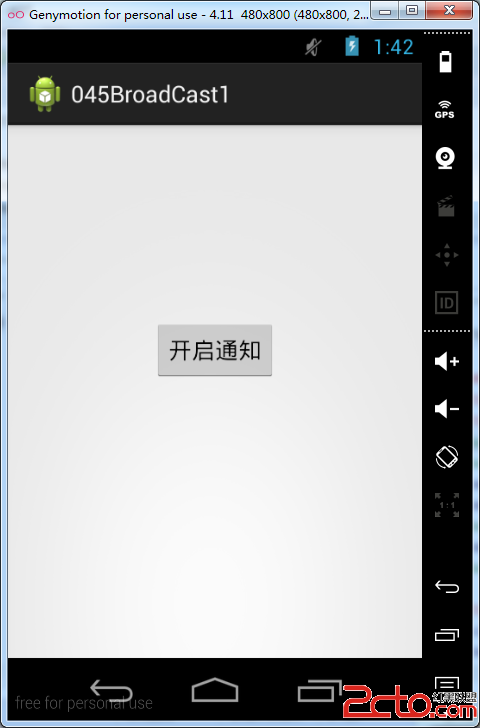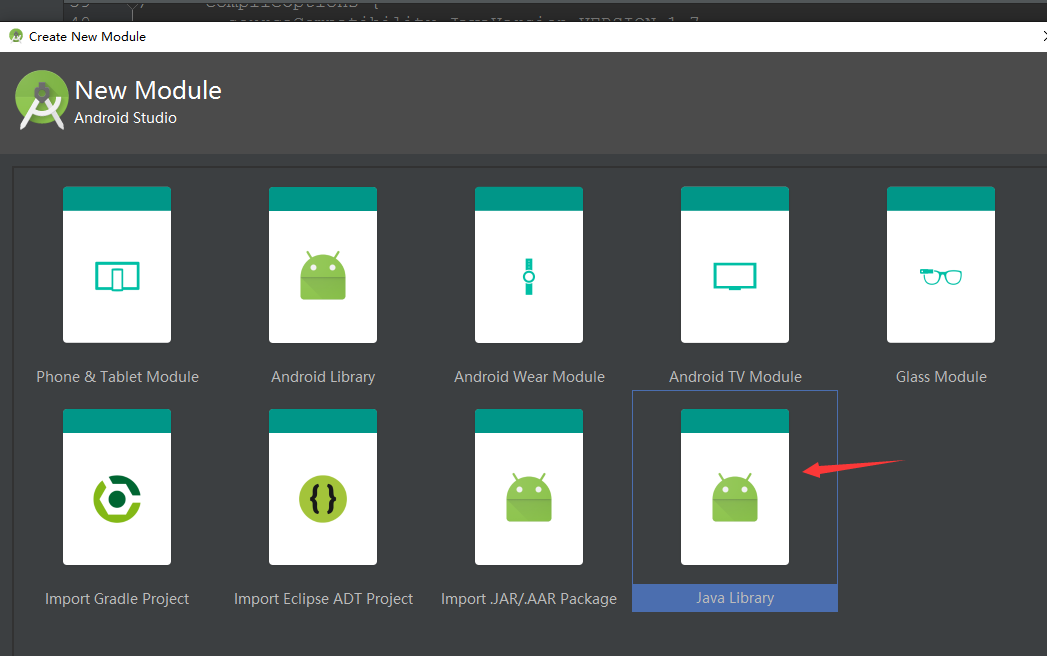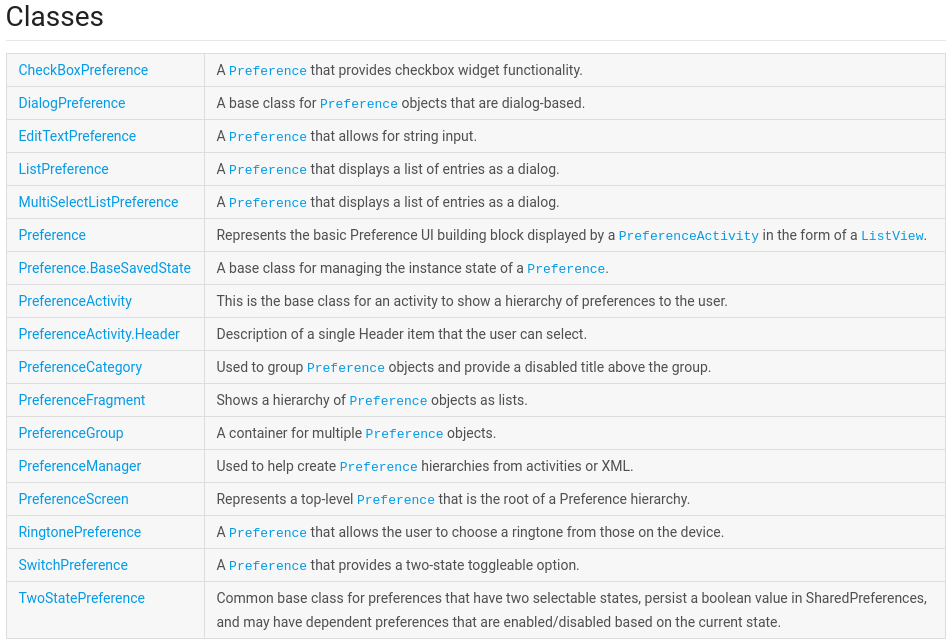編輯:關於Android編程
摘要
在xmpp通信過程中,asmack中提供的Packet組件是IQ,Message,Presence三種: IQ用於查詢 Message用於消息傳遞 Presence用於狀態交互 他們都是Packet的子類,實質是用於將消息封裝成響應的xml格式來進行數據交換,都有著良好的可擴展性。
簡介
我們以開源項目androidpn為例:
androidpn (Android Push Notification)是一個基於XMPP協議的java開源Android push notification實現。它包含了完整的客戶端和服務器端。
androidpn包括Server端和Client端,項目名稱是androidpn-server和androidpn-client。
事實上,androidpn-server可以支持app運行於iOS,UWP,Windows,Linux等平台,不僅限於android,因此,希望項目的名稱改為XPN(Xmpp Push Notification)似乎更加符合其實際場景,我們以後涉及到Android Push Notification統稱為XPN。
XNP目前狀態
項目自2014年1月就已經停止更新了,此外,asmack項目也停止更新了,作者建議使用openfire官方的smack4.0,不過這樣的話引入的jar會特別多,特別大。當然,我們下載到了asmack8.10.0比較新的穩定版本,可以完全用於學習和擴展。
項目相關下載站點
asmack-github.com - asmack項目地址
asmack-asmack.freakempire.de - asmack鏡像地址
androidpn(XPN)-github.com - androidpn下載地址
一.關於Packet數據包
Packet是IQ,Message,Presence的父類,用於實現消息組件類型。
消息語義學message
message是一種基本推送消息方法,它不要求響應。主要用於IM、groupChat、alert和notification之類的應用中。
主要 屬性如下:
type屬性,它主要有5種類型:
normal:類似於email,主要特點是不要求響應;
chat:類似於qq裡的好友即時聊天,主要特點是實時通訊;
groupchat:類似於聊天室裡的群聊;
headline:用於發送alert和notification;
error:如果發送message出錯,發現錯誤的實體會用這個類別來通知發送者出錯了;
to屬性:標識消息的接收方。
from屬性:指發送方的名字或標示。為防止地址外洩,這個地址通常由發送者的server填寫,而不是發送者。
載荷(payload):例如body,subject
<message to="[email protected]/contact" type="chat" > <body> 你好,在忙嗎</body> </message>
出席信息語義學presence
presence用來表明用戶的狀態,如:online、away、dnd(請勿打擾)等。當改變自己的狀態時,就會在stream的上下文中插入一個Presence元素,來表明自身的狀態。要想接受presence消息,必須經過一個叫做presence subscription的授權過程。
屬性:
type屬性,非必須。有以下類別
subscribe:訂閱其他用戶的狀態
probe:請求獲取其他用戶的狀態
unavailable:不可用,離線(offline)狀態
to屬性:標識消息的接收方。
from屬性:指發送方的名字或標示。
載荷(payload):
show:
chat:聊天中
away:暫時離開
xa:eXtend Away,長時間離開
dnd:勿打擾
status:格式自由,可閱讀的文本。也叫做rich presence或者extended presence,常用來表示用戶當前心情,活動,聽的歌曲,看的視頻,所在的聊天室,訪問的網頁,玩的游戲等等。
priority:范圍-128~127。高優先級的resource能接受發送到bare JID的消息,低優先級的resource不能。優先級為
<presence from="[email protected]/pda">
<show>xa</show>
<status>down the rabbit hole!</status>
</presence>
IQ語義學
一種請求/響應機制,從一個實體從發送請求,另外一個實體接受請求,並進行響應。例如,client在stream的上下文中插入一個元素,向Server請求得到自己的好友列表,Server返回一個,裡面是請求的結果。
主要的屬性是type。包括:
Get :獲取當前域值。類似於http get方法。
Set :設置或替換get查詢的值。類似於http put方法。
Result :說明成功的響應了先前的查詢。類似於http狀態碼200。
Error: 查詢和響應中出現的錯誤。
<iq from="[email protected]/pda"
id="rr82a1z7"
to="[email protected]"
type="get">
<query xmlns="jabber:iq:roster"/>
</iq>
二.自定義Packet
由於服務器和客戶端使用的Packet不同,但是他們交互的數據格式都是xml,因此,這個過程我們理解xml實現過程即可。
1.定義Packet封裝對象
由於asmack標簽解析的限制,我們不能自定義解析,除非修改源碼,這裡出於簡單,這裡只能繼承現有標簽之一。
我麼按照項目代碼NotificationIQ為例,這裡沒有繼承Packet,而是繼承了IQ
import org.jivesoftware.smack.packet.IQ; /** * This class represents a notifcatin IQ packet. * * @author Sehwan Noh ([email protected]) */ public class NotificationIQ extends IQ { private String id; private String apiKey; private String title; private String message; private String uri; public NotificationIQ() { } @Override public String getChildElementXML() { StringBuilder buf = new StringBuilder(); buf.append("<").append("notification").append(" xmlns=\"").append( "androidpn:iq:notification").append("\">"); if (id != null) { buf.append("<id>").append(id).append("</id>"); } buf.append("</").append("notification").append("> "); return buf.toString(); } public String getId() { return id; } public void setId(String id) { this.id = id; } public String getApiKey() { return apiKey; } public void setApiKey(String apiKey) { this.apiKey = apiKey; } public String getTitle() { return title; } public void setTitle(String title) { this.title = title; } public String getMessage() { return message; } public void setMessage(String message) { this.message = message; } public String getUri() { return uri; } public void setUri(String url) { this.uri = url; } }
其中,getChildElementXml()是IQ的子類,用來拼接成<iq>下的直接點。
public abstract class IQ extends Packet {
private Type type = Type.GET;
public IQ() {
super();
}
public IQ(IQ iq) {
super(iq);
type = iq.getType();
}
/**
* Returns the type of the IQ packet.
*
* @return the type of the IQ packet.
*/
public Type getType() {
return type;
}
/**
* Sets the type of the IQ packet.
*
* @param type the type of the IQ packet.
*/
public void setType(Type type) {
if (type == null) {
this.type = Type.GET;
}
else {
this.type = type;
}
}
public String toXML() {
StringBuilder buf = new StringBuilder();
buf.append("<iq ");
if (getPacketID() != null) {
buf.append("id=\"" + getPacketID() + "\" ");
}
if (getTo() != null) {
buf.append("to=\"").append(StringUtils.escapeForXML(getTo())).append("\" ");
}
if (getFrom() != null) {
buf.append("from=\"").append(StringUtils.escapeForXML(getFrom())).append("\" ");
}
if (type == null) {
buf.append("type=\"get\">");
}
else {
buf.append("type=\"").append(getType()).append("\">");
}
// Add the query section if there is one.
String queryXML = getChildElementXML();
if (queryXML != null) {
buf.append(queryXML);
}
// Add the error sub-packet, if there is one.
XMPPError error = getError();
if (error != null) {
buf.append(error.toXML());
}
buf.append("</iq>");
return buf.toString();
}
/**
* Returns the sub-element XML section of the IQ packet, or <tt>null</tt> if there
* isn't one. Packet extensions <b>must</b> be included, if any are defined.<p>
*
* Extensions of this class must override this method.
*
* @return the child element section of the IQ XML.
*/
public abstract String getChildElementXML();
/**
* Convenience method to create a new empty {@link Type#RESULT IQ.Type.RESULT}
* IQ based on a {@link Type#GET IQ.Type.GET} or {@link Type#SET IQ.Type.SET}
* IQ. The new packet will be initialized with:<ul>
* <li>The sender set to the recipient of the originating IQ.
* <li>The recipient set to the sender of the originating IQ.
* <li>The type set to {@link Type#RESULT IQ.Type.RESULT}.
* <li>The id set to the id of the originating IQ.
* <li>No child element of the IQ element.
* </ul>
*
* @param iq the {@link Type#GET IQ.Type.GET} or {@link Type#SET IQ.Type.SET} IQ packet.
* @throws IllegalArgumentException if the IQ packet does not have a type of
* {@link Type#GET IQ.Type.GET} or {@link Type#SET IQ.Type.SET}.
* @return a new {@link Type#RESULT IQ.Type.RESULT} IQ based on the originating IQ.
*/
public static IQ createResultIQ(final IQ request) {
if (!(request.getType() == Type.GET || request.getType() == Type.SET)) {
throw new IllegalArgumentException(
"IQ must be of type 'set' or 'get'. Original IQ: " + request.toXML());
}
final IQ result = new IQ() {
public String getChildElementXML() {
return null;
}
};
result.setType(Type.RESULT);
result.setPacketID(request.getPacketID());
result.setFrom(request.getTo());
result.setTo(request.getFrom());
return result;
}
/**
* Convenience method to create a new {@link Type#ERROR IQ.Type.ERROR} IQ
* based on a {@link Type#GET IQ.Type.GET} or {@link Type#SET IQ.Type.SET}
* IQ. The new packet will be initialized with:<ul>
* <li>The sender set to the recipient of the originating IQ.
* <li>The recipient set to the sender of the originating IQ.
* <li>The type set to {@link Type#ERROR IQ.Type.ERROR}.
* <li>The id set to the id of the originating IQ.
* <li>The child element contained in the associated originating IQ.
* <li>The provided {@link XMPPError XMPPError}.
* </ul>
*
* @param iq the {@link Type#GET IQ.Type.GET} or {@link Type#SET IQ.Type.SET} IQ packet.
* @param error the error to associate with the created IQ packet.
* @throws IllegalArgumentException if the IQ packet does not have a type of
* {@link Type#GET IQ.Type.GET} or {@link Type#SET IQ.Type.SET}.
* @return a new {@link Type#ERROR IQ.Type.ERROR} IQ based on the originating IQ.
*/
public static IQ createErrorResponse(final IQ request, final XMPPError error) {
if (!(request.getType() == Type.GET || request.getType() == Type.SET)) {
throw new IllegalArgumentException(
"IQ must be of type 'set' or 'get'. Original IQ: " + request.toXML());
}
final IQ result = new IQ() {
public String getChildElementXML() {
return request.getChildElementXML();
}
};
result.setType(Type.ERROR);
result.setPacketID(request.getPacketID());
result.setFrom(request.getTo());
result.setTo(request.getFrom());
result.setError(error);
return result;
}
/**
* A class to represent the type of the IQ packet. The types are:
*
* <ul>
* <li>IQ.Type.GET
* <li>IQ.Type.SET
* <li>IQ.Type.RESULT
* <li>IQ.Type.ERROR
* </ul>
*/
public static class Type {
public static final Type GET = new Type("get");
public static final Type SET = new Type("set");
public static final Type RESULT = new Type("result");
public static final Type ERROR = new Type("error");
/**
* Converts a String into the corresponding types. Valid String values
* that can be converted to types are: "get", "set", "result", and "error".
*
* @param type the String value to covert.
* @return the corresponding Type.
*/
public static Type fromString(String type) {
if (type == null) {
return null;
}
type = type.toLowerCase();
if (GET.toString().equals(type)) {
return GET;
}
else if (SET.toString().equals(type)) {
return SET;
}
else if (ERROR.toString().equals(type)) {
return ERROR;
}
else if (RESULT.toString().equals(type)) {
return RESULT;
}
else {
return null;
}
}
private String value;
private Type(String value) {
this.value = value;
}
public String toString() {
return value;
}
}
}
最終可生成如下結構的數據
<iq from=""> <nofitication xlns=""> <iq>
我們在項目中的使用很簡單
xmppManager.getConnection().sendPacket(<NotificationIQ>niq)
當然,上面只是實現了object->xml,接下來我們實現xml->data
2.實現IQProvider
先來看看IQProvider源碼
public interface IQProvider {
/**
* Parse the IQ sub-document and create an IQ instance. Each IQ must have a
* single child element. At the beginning of the method call, the xml parser
* will be positioned at the opening tag of the IQ child element. At the end
* of the method call, the parser <b>must</b> be positioned on the closing tag
* of the child element.
*
* @param parser an XML parser.
* @return a new IQ instance.
* @throws Exception if an error occurs parsing the XML.
*/
public IQ parseIQ(XmlPullParser parser) throws Exception;
}
實現自定義的解析工具
public class NotificationIQProvider implements IQProvider {
public NotificationIQProvider() {
}
@Override
public IQ parseIQ(XmlPullParser parser) throws Exception {
NotificationIQ notification = new NotificationIQ();
for (boolean done = false; !done;) {
int eventType = parser.next();
if (eventType == 2) {
if ("id".equals(parser.getName())) {
notification.setId(parser.nextText());
}
if ("apiKey".equals(parser.getName())) {
notification.setApiKey(parser.nextText());
}
if ("title".equals(parser.getName())) {
notification.setTitle(parser.nextText());
}
if ("message".equals(parser.getName())) {
notification.setMessage(parser.nextText());
}
if ("uri".equals(parser.getName())) {
notification.setUri(parser.nextText());
}
} else if (eventType == 3
&& "notification".equals(parser.getName())) {
done = true;
}
}
return notification;
}
}
項目中使用方法
ProviderManager.getInstance().addIQProvider("notification",
"androidpn:iq:notification",
new NotificationIQProvider());
在asmack中PacketParserUtils類中會進行如下調用
Object provider = ProviderManager.getInstance().getIQProvider(elementName, namespace);
if (provider != null) {
if (provider instanceof IQProvider) {
iqPacket = ((IQProvider)provider).parseIQ(parser);
}
else if (provider instanceof Class) {
iqPacket = (IQ)PacketParserUtils.parseWithIntrospection(elementName,
(Class<?>)provider, parser);
}
}
 RecyclerView完全解析之結合AA(Android Annotations)注入框架實例(三十)
RecyclerView完全解析之結合AA(Android Annotations)注入框架實例(三十)
(一).前言:話說RecyclerView已經面市很久,也在很多應用中得到廣泛的使用,在整個開發者圈子裡面也擁有很不錯的口碑,那說明RecyclerView擁有比List
 從零開始學android(BroadCast廣播.四十五.)
從零開始學android(BroadCast廣播.四十五.)
與Service相似,在android中還有一種運行在後台的4大組件之一,他就是broadCcast,但是他不用考慮是否有接受的對象,只需要考慮發送即可。
 android 記一次annotation + AbstractProcessor 編譯自動生成sdcard管理類
android 記一次annotation + AbstractProcessor 編譯自動生成sdcard管理類
https://github.com/shf981862482/SuperAnnotation在app開發中,難免要做一些sdcard的操作比如:判斷sdcard存在,生
 Android Settings(Preferences)開發
Android Settings(Preferences)開發
在Android的app開發中,很多時候我們的app需要提供用戶一個用戶體驗統一的,友好的setting界面,也就是設置界面。在android系統中,就有一個settin